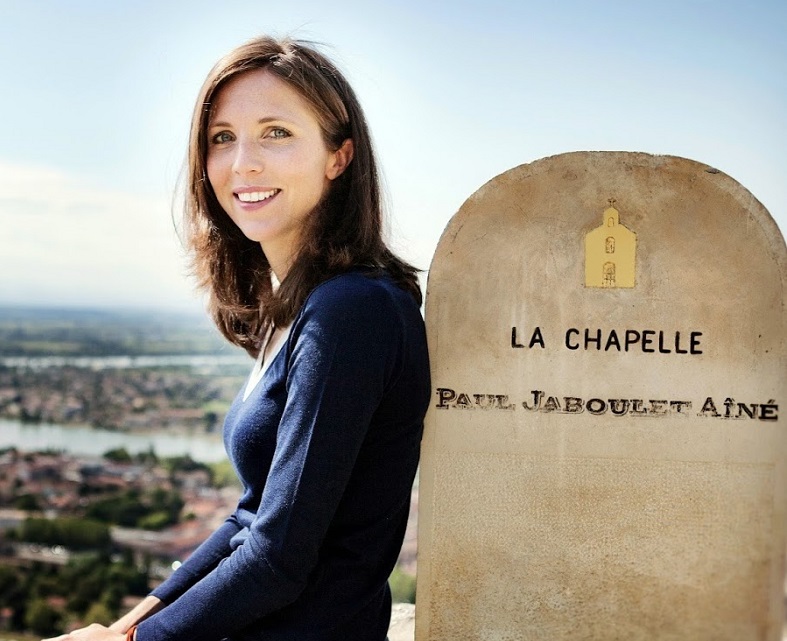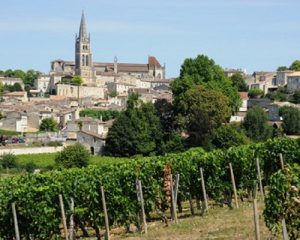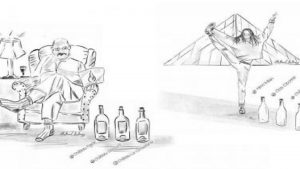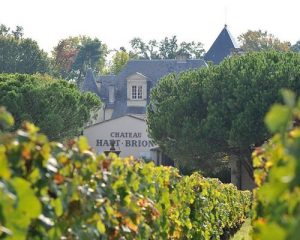
Caroline Frey divides her time between France and Switzerland, across which she manages four wine domains: Château la Lagune in Bordeaux, Château Corton C. in Aloxe-Corton (Burgundy), two hectares in the Swiss Valais, and Maison Paul Jaboulet Aîné in the northern Rhône Valley. The talented oenologist took over from her father, Jean-Jacques Frey, who made the acquisition in 2006. Rich heritage combined with a surge of dynamic activity has made the 125 hectares of vines into a true institution of the northern Rhône.
An immeasurable inheritance
Most of this property’s history can be traced via the Jaboulet family tree. Founded by Antoine Jaboulet in 1834, the domain was passed down to his sons, and the pattern continued all the way to 1997, when Michel Jaboulet was the final member of the family to make wine. In 2006, he sold the property on to the Frey group, who were also managing vines in Champagne and Bordeaux (Château la Lagune) at the time. In acquiring the reputed Rhône property, whose Syrah cuvées are lauded the world over, especially those from La Chapelle, the group affirmed its search for excellence. Paul Jaboulet Aîné cultivates the second largest vineyard on the famous Hermitage hill, and overall tends to 125 hectares, including 25 Hermitage (mainly Syrah, but also Grenache and Mourvèdre – the region’s inseparable trio). These grapes are planted on such prestigious terroirs as Le Méal, les Greffieux, Les Dionnières, Les Roucoules, and Bessards to the west of the mount. Along with Côte-Rôtie, Hermitage is undoubtedly the jewel of the northern Rhône. As well as these exceptional terroirs, the maison also produces wine from the appellations of Saint-Joseph, Crozes-Hermitage, Cornas, Châteauneuf-du-Pâpe, Côte-Rôtie, and Condrieu, crafting both red and white cuvées. Most of the vines are planted in soils of white pebble, enjoying a warm microclimate and full south-facing exposure. This means that the grapes can mature in optimal conditions. In Crozes, the estate vinifies its cellaring cuvées under the names of Domaine de Thalabert and Domaine de Roure.
Caroline Frey
Caroline Frey couldn’t have been more suited to take up the reins of Maison Paul Jaboulet Aîné. Daughter of the businessman Jean-Jacques Frey, she was just 5 years old when her father made his first foray into the world of wine by acquiring some parcels in Champagne. Caroline thus grew up in a very particular milieu, between the vineyard and the winery, and first found great success in horse riding, a skill that she honed to the very top level when she joined France’s Espoir team. At 21, she decided to keep this as a passion, and set off to train in oenology at Bordeaux’s Institut du Vin. At just 24 years old, she put her potential into practice, taking over Château la Lagune and leading the third cru classé in an organic and biodynamic direction. A few years later, she brought her talents to Domaine Paul Jaboulet Aîné. Nicknamed the ‘Neptune du Vin’ by the press, Caroline has added to her collection with Château Corton-André in Burgundy and a domain of two hectares in the Swiss Valais.
As soon as she arrived at Maison Paul Jaboulet Aîné, the oenologist decided to reduce the property’s trading activity in order to concentrate on in-house vinification. She launched straight into converting the vineyard to organic and biodynamic agriculture. An Haute Valeur Environnementale certificate had already been obtained in 2015. Wishing to respect the traditions and philosophy of the domain’s rich heritage, Caroline has kept hold what the domain has always striven for: to preserve the quality of the fruit, vinifying with rigour, and maturing the wine with finesse in order to bring out the best of the Rhône’s land. Caroline says: “since there can be no fine wine without fine grapes, the vines are at the heart of what we do; each plant must be able to ripen its fruit in the best conditions and draw the taste of the terroir from the soil. […] The excellence of our cuvées lies in the quality of the fruit, beautifully expressed through meticulous vinification and fine ageing. In the Rhône’s best appellations, it’s the purest expression of terroir that allows fine wine to flourish in all its balance, complexity, and longevity.”
La madone de la chapelle
The domain’s landmark wine is undoubtedly the Hermitage La Chappelle cuvé, the 1961 vintage of which was classed as one of the top ten finest wines of the century. Depending on the vintage, between 30,000 and 80,000 bottles are produced per year. The idea is always to craft wine with a nuanced yet light tannin, most of the grapes coming from the middle and bottom of the Méal slope. After maturing, the casks are tasted, and the less dense wines are set aside to be blended as part of the La Petite Chapelle cuvée, a bottle to be enjoyed sooner than its elder sibling.
See the full selection of wines from Maison Paul Jaboulet Aîné here



